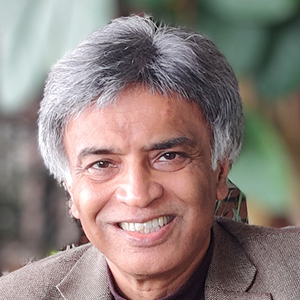In the current Covid environment, there has been a sudden upsurge of interest and subsequent endorsement of anything that can be termed as Telemedicine, be it a video call over Zoom, a forwarding of patient data via WhatsApp or a prescription sent via email.
So, what is Telemedicine ?
A harbinger of dreaded diagnostic news over the internet ? An easy way to have your prescription medicine delivered to your doorstep, or a quick chat with a physician over a phone call following a ‘find a doctor’ search on Google ?
Currently, a vendor of any such service can lay claims to being a provider of Telemedicine. It’s is not really a matter of concern either, as long as some basic need of a patient is addressed. Some vendors are reaching out with Telemedicine 3.0.
Not sure what happened to the preceding versions !
Global growth of Tele-Medicine is led by the US , followed by China. Historically, Tele-Medicine growth in the US has been driven by health insurance companies to save on reimbursement costs. Significant number of ER visits have been avoided (~15%) with teleconsultation savings of $300-$1500 per saved visit.
In Indian context, Tele-Radiology is the front runner in the field of Tele-Health. We do see pilot and small-scale commercial deployment of Tele-Ophthalmology, Tele-consultation, Tele-Cardiology and e-Pharmacy as well . There have also been various public sector initiatives especially targeting the rural, base of the pyramid sector where access to basic health care screening has been the major driver.
However, services available today fall far short of the promise and the scope of what Telemedicine can deliver. Current approximations have to die out and be replaced by more comprehensive and complete solutions . Solutions that address the full wellness cycle from Prevention through Screening, Diagnosis, Treatment and Rehab. Not just from the demand standpoint of these services but also from the supply side i.e. the availability of skilled and trained physicians who can provide these services. Currently there is a 1000 to 1 patient to doctor ratio problem simply to access basic healthcare advice, let alone a monumental shortage of specialists and trained healthcare workers worldwide.
Telemedicine, what it should be
According to WHO and as highlighted in the recent MCI guidelines for Telemedicine in India, Telemedicine is defined as ‘The delivery of health care services, where distance is a critical factor, by all health care professionals using information and communication technologies for the exchange of valid information for diagnosis, treatment and prevention of disease and injuries, research and evaluation, and for the continuing education of health care providers, all in the interests of advancing the health of individuals and their communities.’
To realise these goals of Telemedicine, and to take full advantage of existing and emerging technologies, we have to look beyond video conferencing solutions and the current pandemic for new Telemedicine solutions to arise.
Long Live Telemedicine !
Key challenges facing Telemedicine
- Global shortage and access to medical staff. Experts are few , patients are everywhere. By 2025, an increase of 1Bn in world population, 300mn.>65 years and a rise in chronic disease of around 60 % in emerging markets. *
- Poor and dated skillset of medical staff. Skill gap of 97% across healthcare workforce in India, 87% in radiology. **
- Healthcare going from general to personalised care . Transition from disease treatment to wellness management and prevention. Access to complete and current Personal Health Records will be critical to any holistic approach to healthcare.
- Patients transitioning from ‘waiting room captives’ to discerning ‘customers’ with choices
- A transition from ‘brick & mortar’ to ‘blended delivery’ of effective healthcare services, a combination of online and offline ( face 2 face)
- Regulations and practice restrictions for cross-border access and delivery of healthcare data ( both at state and national level). Personal Health Records (PHR) should be private and protected, very much like personal financial data is today. Also, like financial data it should be up to the owner, to decide which expert to share the data with and where to get advice or medical counsel, before embarking on a treatment plan.
Telemedicine is here to stay. However, for it to be successful, it has to address the full patient wellness cycle, provide data security and portability, full support for online EMR including standards like DICOM. And a truly interactive workflow between expert and patient that supports treatment and recovery follow up beyond just a video call.

Mr. Sham Banerji
CEO
i2iTeleSolutions & Telemedicine Pvt. Ltd.






